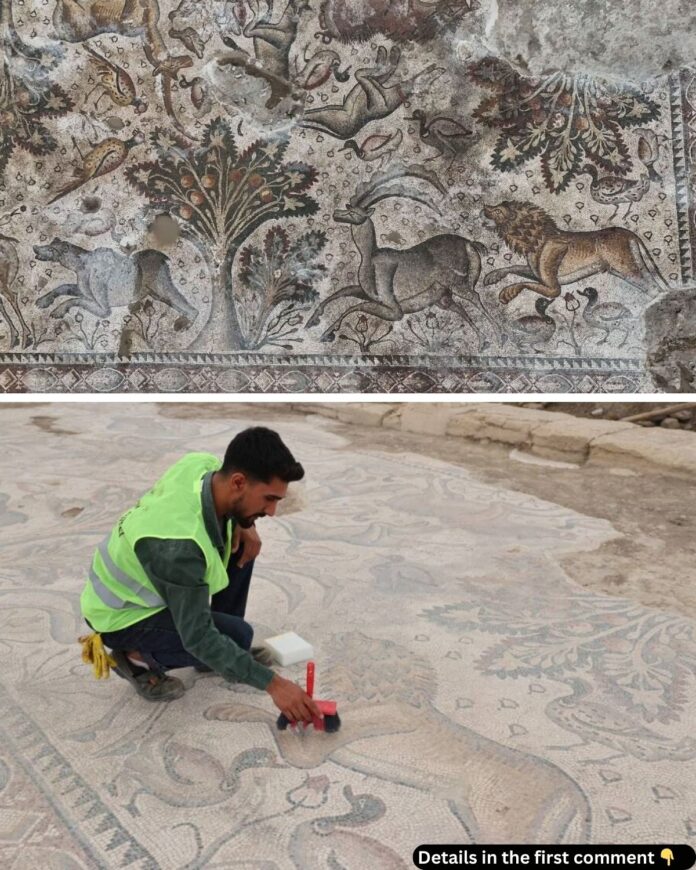In a quiet corner of eastern Türkiye, a farmer’s routine task led to an extraordinary discovery. Beneath the soil of Salkaya village in Elazığ lay a breathtaking treasure from the late Roman era: a sprawling mosaic showcasing intricate hunting scenes. Spanning 84 square meters, this mosaic is not only a testament to ancient artistic mastery but also a window into the cultural and political world of the time. With its depictions of fierce animals, serene nature, and dynamic narratives, this mosaic offers an unprecedented glimpse into the Roman Empire’s legacy in Anatolia.
A Chance Discovery That Changed History
The story began in April 2023 when farmer Mehmet Emin Sualp was planting cherry saplings on his land. As he dug into the soil, he unearthed a series of colorful tiles buried just 50 centimeters beneath the surface. Recognizing the potential significance of his find, he alerted local authorities. Archaeologists from the Elazığ Museum arrived, and what they uncovered was beyond their wildest expectations: an intact mosaic featuring dramatic hunting scenes and serene natural imagery. Preserved by a collapsed wooden roof, the artwork had withstood centuries of upheaval, offering a rare and pristine look into ancient Roman life.
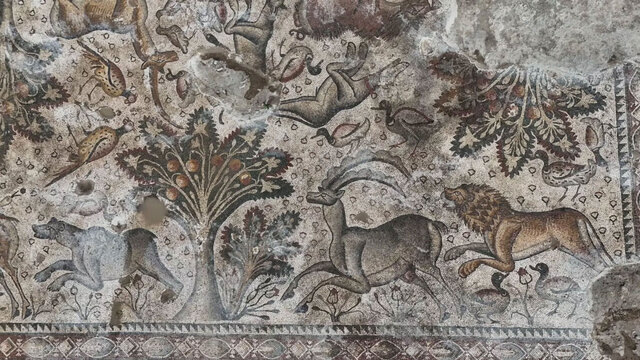
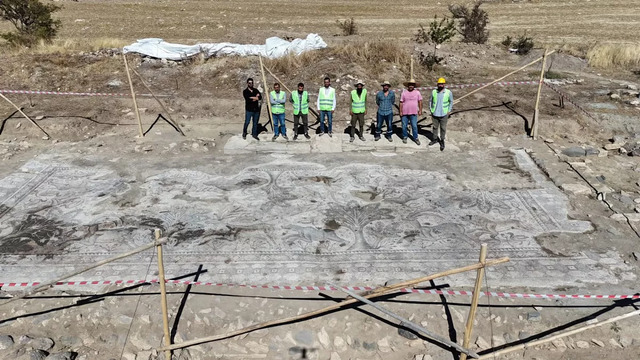
The mosaic is believed to have been part of a Roman official’s residence, symbolizing power and authority. The settlement near Salkaya, located approximately 500 kilometers east of Ankara, was likely a bustling hub during the Roman Empire’s expansion towards Persia. Coins and artifacts recovered from the site indicate that it was active during the late Roman to early Byzantine period.
Video
A Turkish farmer has uncovered a massive 1,700-year-old Roman mosaic – watch the video to explore this incredible archaeological discovery and its historical significance!
A Masterpiece of Roman Art
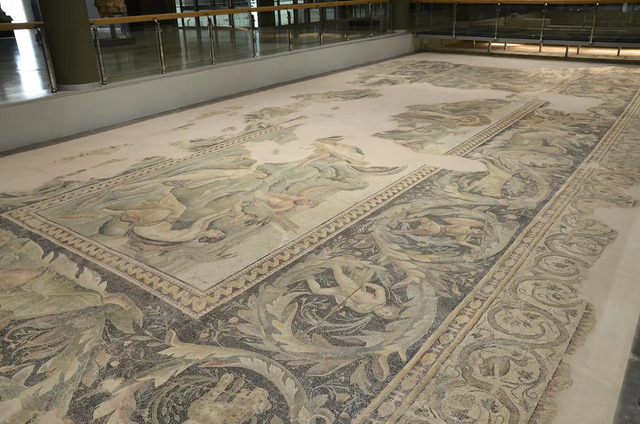
The mosaic itself is a marvel of craftsmanship. Its hunting scenes are dynamic and vivid, depicting animals in motion and the tension of the chase. A lion lunges after a mountain goat, while a bear charges at a fleeing stag. Greyhounds surround a wild boar, their slender forms embodying speed and precision. Perhaps the most striking image is that of an Anatolian leopard sinking its teeth into the neck of an ostrich, a rare depiction that has captivated archaeologists.
Interspersed among these intense pursuits are scenes of peace and beauty. Birds like pheasants, ducks, and geese appear alongside blooming roses and pomegranate trees, creating a contrast that highlights the duality of nature. According to lead archaeologist Emre Çayır, the mosaic’s design is rich in symbolism. Lions and bears, for instance, represent authority and strength in Roman tradition, while hunting dogs underscore humanity’s place within the food chain. The mosaic is not merely decorative; it is a narrative, an expression of power and survival that reflects the values of its time.
Unveiling a Roman Frontier Settlement
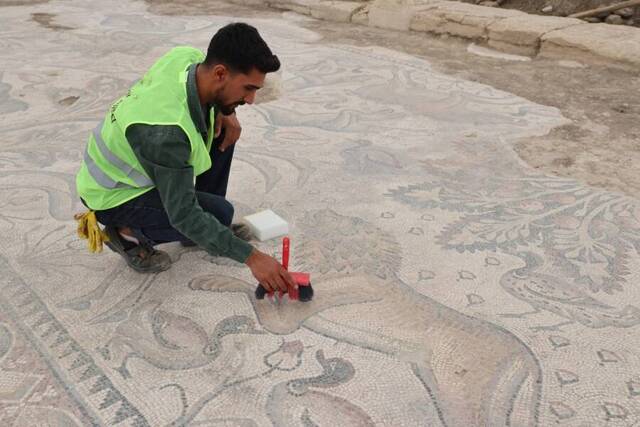
The mosaic’s discovery has shed light on a settlement that was likely a crucial outpost in the Roman Empire’s frontier territories. Archaeological excavations have revealed other structures at the site, including a basalt road, an irrigation channel, and what appears to be a winemaking facility. These findings suggest a well-organized and thriving community.
The settlement’s location near the frontier with ancient Persia underscores its strategic importance. As a link between the Roman heartland and the eastern territories, it would have played a key role in trade, governance, and military operations. The mosaic, with its intricate design and symbolic content, was likely a centerpiece of this settlement, serving as a visual representation of the power and prestige of its inhabitants.
Challenges in Preservation
Preserving such a significant find poses unique challenges. A team of conservators has been working diligently to protect the mosaic from damage. For now, it is covered to shield it from winter weather, but its long-term future remains uncertain. Turkish authorities must decide whether to relocate the mosaic to a museum or to establish a protective site at its current location. This decision will depend on further excavations and the extent of additional discoveries in the area.
Despite these challenges, the mosaic’s discovery has sparked excitement among archaeologists and historians. It offers an unprecedented look into the art and culture of a long-lost civilization and serves as a reminder of the importance of preserving our shared heritage.
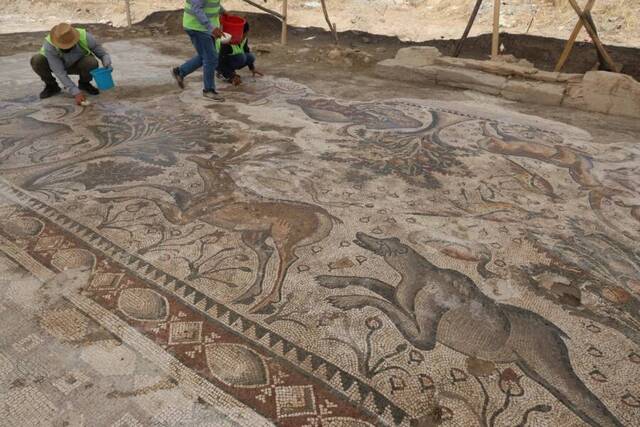
The Cultural Significance of the Mosaic
Beyond its artistic beauty, the mosaic provides valuable insights into the daily life and values of the Roman Empire. Hunting, a favored pastime of the Roman elite, is depicted not only as a practical activity but also as a metaphor for power and control. The inclusion of both fierce predators and peaceful nature scenes reflects a balanced view of the natural world, emphasizing the interconnectedness of life.
The mosaic’s craftsmanship also highlights the skills of Roman artisans and their ability to convey complex narratives through art. Each tile contributes to a larger story, showcasing the ingenuity and creativity of the period. The mosaic is a testament to the cultural and artistic achievements of the Roman Empire, offering a glimpse into a world where art was both functional and symbolic.
A Discovery with Global Impact
The mosaic’s significance extends beyond Türkiye. It adds to the global understanding of Roman art and culture, highlighting the empire’s influence on regions far from its core territories. The Anatolian leopard, for instance, is a rare subject in Roman mosaics, and its depiction here underscores the biodiversity of the region and the Roman appreciation for exotic animals.
As more artifacts are uncovered, the site may reveal additional details about the settlement’s role within the Roman Empire. The discovery also underscores the importance of local communities in preserving archaeological heritage. Without Mehmet Emin Sualp’s vigilance, this extraordinary mosaic might have remained hidden for centuries more.
Conclusion
The discovery of the Roman-era hunt mosaic in Salkaya is a milestone in Türkiye’s archaeological history. Its dynamic depictions of hunting scenes, serene natural imagery, and symbolic narratives offer a window into a world long past. As archaeologists continue their work, this mosaic serves as a reminder of the enduring power of art to connect us to our shared human history. Whether displayed in a museum or preserved in its original setting, this masterpiece will undoubtedly inspire awe and wonder for generations to come.
